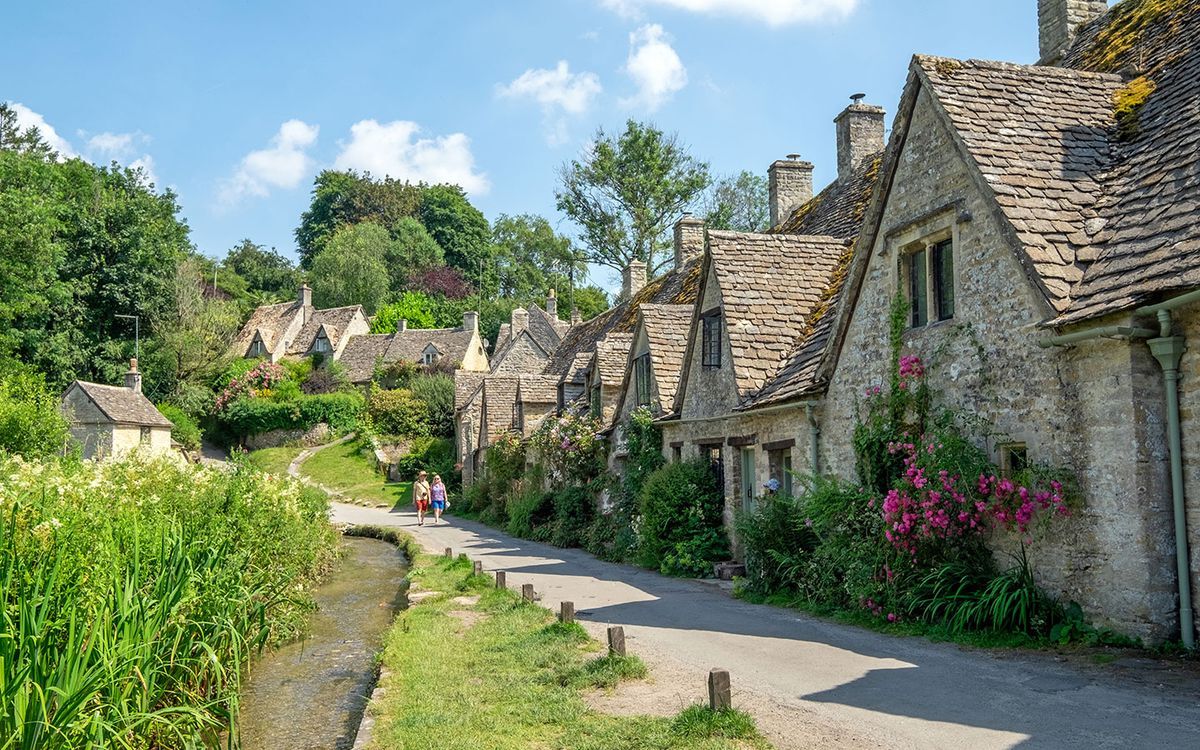
Why is Bibury often called "the most beautiful village in England"? Nestled in the heart of Gloucestershire, Bibury is a picturesque village that seems to have leaped straight out of a fairy tale. With its honey-colored stone cottages, serene landscapes, and rich history, it's no wonder this charming spot has captured the hearts of many. From the ancient Church of St Mary to the iconic Arlington Row cottages, Bibury offers a unique blend of architectural beauty and natural splendor. Whether you're wandering along the River Coln or exploring the Rack Isle Nature Reserve, every corner of Bibury tells a story. Join us as we uncover 20 captivating facts about this enchanting village.
Discovering Bibury: A Hidden Gem in Gloucestershire
Bibury, a quaint village in Gloucestershire, England, is often hailed as one of the most beautiful villages in the country. Its rich history, stunning architecture, and serene landscapes make it a must-visit destination. Let's dive into some fascinating facts about this charming village.
-
Location and Geography
Bibury is located on the River Coln, a tributary of the Thames, in the Cotswold District of Gloucestershire. Nestled in a steep valley, the village's natural charm and scenic appeal are undeniable. -
History
The origins of Bibury trace back to the early 8th century when Bishop Wilfrith of Worcester granted estates to Earl Leppas and his daughter Beaga. Over time, the settlement evolved from Beagan-byrig to Bibury. -
Domesday Book Mention
In 1086, Bibury was recorded in the Domesday Book as Becheberie. The lands and church were initially held by St. Mary's Priory at Worcester, later passing to the Abbey of Osney near Oxford in 1130. The Abbey retained control until its dissolution in 1540.
Architectural Marvels of Bibury
Bibury is home to some of the most stunning and historically significant buildings in England. Let's explore a few of these architectural gems.
-
Church of St Mary
The Church of St Mary, a Grade I listed building, is one of the oldest structures in Bibury. This late Saxon church features random cobblestone and coursed rubble limestone with a slate roof. The churchyard is notable for its well-preserved table tombs and headstones from the 17th and 18th centuries. -
Arlington Baptist Church
Adjacent to the primary school, Arlington Baptist Church has been in operation since the 1740s. This church serves as a significant religious landmark in the village. -
Roman Villa Discovery
In the late 19th century, a Roman villa was accidentally discovered in the parish of Bibury. Archaeological finds include Roman pottery, coins, and remnants of tesselated pavements, although no detailed examination has been conducted. -
William Morris's Praise
The renowned 19th-century artist and craftsman William Morris once described Bibury as "the most beautiful village in England." His admiration is well-founded, given the village's honey-coloured stone cottages and serene surroundings. -
Arlington Row Cottages
Arlington Row, a Grade I listed row of cottages, was originally built in 1380 as a monastic wool store. In the 17th century, these cottages were converted into dwellings for weavers who supplied cloth for fulling at nearby Arlington Mill. The cottages have appeared on countless calendar covers and postcards, making them one of the most photographed sites in Britain.
Nature and Wildlife in Bibury
Bibury's natural beauty is complemented by its rich wildlife and serene landscapes. Here are some highlights of the village's natural attractions.
-
Rack Isle Nature Reserve
Rack Isle, a water meadow and marshy area, is a significant habitat for water-loving plants and birds. It was known as a place where wool was hung to dry after being washed in Arlington Row. Today, it is a National Trust Wildfowl Reserve. -
Bibury Trout Farm
Established in 1902, Bibury Trout Farm is one of the oldest working trout farms in the country. Visitors can catch their own trout in a relaxed atmosphere or purchase freshly caught fish from the shop.
Historic Landmarks and Attractions
Bibury is dotted with historical landmarks that offer a glimpse into the village's rich past. Let's take a closer look at some of these attractions.
-
Swan Hotel
The Swan Hotel, standing opposite the east side of the bridge across the River Coln, is Bibury's most picturesque building. Originally a coaching inn built in the 18th century, it has been a significant landmark since at least 1672. The hotel has also served as a venue for manor court sessions and housed the village lock-up. -
Bibury Court
Bibury Court, a Grade I listed building, was constructed in 1633 in the Jacobean style. It has been a hotel but has now closed permanently. The court estate features a mill house, dovecote, and stables, adding to its historic charm. -
Ablington Manor
Ablington Manor, built in 1590, is another Grade I listed building in Bibury. It features an ornate porch adorned with statues of Queen Elizabeth, James I, Henry VIII, Queen Mary, and her husband Philip of Spain. -
Primary School
The village primary school was built in the 1850s and had 43 pupils on its roll in two classes as of 2015. The school is adjacent to the Church of St Mary and serves as an educational hub for the local community.
Bibury's Unique Appeal
Bibury's charm extends beyond its architecture and history. The village has a unique appeal that attracts visitors from around the world.
-
Japanese Tourism
Bibury is particularly frequented by Japanese tourists. This is largely attributed to Emperor Hirohito having stayed in the village during his European tour, which has made it a popular destination for Japanese visitors. -
Architectural Significance
Bibury boasts an extraordinary number of listed buildings, with 123 in total. Of these, 116 are listed Grade II, and four are Grade I, including the weavers' cottages on Arlington Row, the parish church of St Mary, Ablington Manor, and Bibury Court. -
Historical Landmarks
The village is dotted with historical landmarks such as the old mill stream, which faces the cottages in Arlington Row. This area provides a beautifully timeless appearance and is a significant part of Bibury's heritage. -
Tourist Attractions
Visitors to Bibury can enjoy a variety of activities, including strolling along the Coln River, admiring the picturesque cottages, and exploring the Rack Isle nature reserve. The village's serene atmosphere and natural beauty make it an ideal destination for those seeking a tranquil getaway. -
Film and Television Locations
Arlington Row has been used as a film and television location for several notable productions, including Stardust and Bridget Jones's Diary. The village's picturesque setting and historic architecture make it an attractive location for filmmakers. -
Conservation Efforts
The Royal College of Arts has played a significant role in preserving Arlington Row. The National Trust also manages the Wildfowl Reserve at Rack Isle, ensuring the conservation of this unique habitat and its water-loving plants and birds.
Bibury's Timeless Charm
Bibury, with its rich history and stunning architecture, stands out as a quintessential English village. From the ancient Church of St Mary to the picturesque Arlington Row cottages, every corner tells a story. The Bibury Trout Farm offers a unique experience, while the Rack Isle Nature Reserve provides a haven for wildlife enthusiasts. The village's connection to Japanese tourism and its appearances in films like Bridget Jones's Diary add to its allure. William Morris's praise of Bibury as "the most beautiful village in England" still rings true. Whether you're exploring the Roman villa remains or staying at the historic Swan Hotel, Bibury promises a blend of history, beauty, and tranquility. With its numerous listed buildings and serene landscapes, Bibury is a must-visit for anyone seeking a glimpse into England's timeless charm.
Was this page helpful?
Our commitment to delivering trustworthy and engaging content is at the heart of what we do. Each fact on our site is contributed by real users like you, bringing a wealth of diverse insights and information. To ensure the highest standards of accuracy and reliability, our dedicated editors meticulously review each submission. This process guarantees that the facts we share are not only fascinating but also credible. Trust in our commitment to quality and authenticity as you explore and learn with us.


